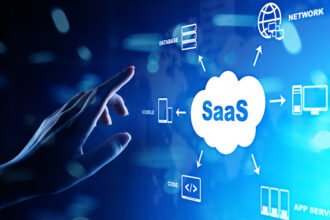
These days, when it comes to enterprise software, it seems that it is all about the cloud. Some software applications such as Salesforce, Marketo, and Workday, have made quite a name for themselves in this space. Can Business Intelligence follow the same path to success? Does it make sense to house your BI in the cloud? I believe that it depends. Let’s explore why.

These days, when it comes to enterprise software, it seems that it is all about the cloud. Some software applications such as Salesforce, Marketo, and Workday, have made quite a name for themselves in this space. Can Business Intelligence follow the same path to success? Does it make sense to house your BI in the cloud? I believe that it depends. Let’s explore why.
There are four criteria that impact the decision for a cloud vs. on-premise BI strategy. Let’s take a look at how they affect your approach.
Question 1: Where is the data located?
Your BI Strategy should vary depending on the location of data. If your data is distributed, some data may already be in the cloud, e.g. web data / clickstreams; and some on-premise, such as corporate data. For real-time or near real-time analytics, you need to deploy your BI as close to the source as possible. For example, when analyzing supply chain data out of an on-premise SAP system, where your database, application and infrastructure are all sitting on-premise, it is expensive and frankly impractical to move the data to the cloud before you start analyzing it.
Your data can also be geographically distributed. Unless your cloud infrastructure is co-located with your data geo zones, your BI experience can suffer from data latency and long refresh intervals.
Question 2: What are the security levels of data?
It’s important to acknowledge that data security levels are different in the cloud. You may not be able to put all your analytics outside of the company firewall. According to Cisco’s 2012 Global Cloud Networking survey, 72% of respondents cited data protection security as the top obstacle to a successful implementation of cloud services.
Question 3: What are the choice preferences of your users?
Customer preference is extremely important today. The balance of power has shifted, and users and customers are now the ones who decide whether an on-premise or a cloud deployment is suitable for them. What’s more, each customer’s maturity model is different. As an application provider or business process automation provider, you need to cater to your individual customers’ business needs.
Question 4: What operational SLAs does your Cloud BI vendor oblige you to?
Your operational SLAs can depend on cloud infrastructure providers, obliging you to service quality levels different from what you need. Pure cloud BI vendors provide their BI software over the public Internet through a utility pricing and delivery scheme. As much as this model provides an attractive alternative when resources are limited, it’s not for everyone. In most cases, the SaaS BI vendor depends on IaaS vendors (such as Amazon, Savvis, OpSource, etc.) for storage, hardware, and networks. As a result, the SaaS BI vendors’ operational processes have to align with the infrastructure vendors’ for housing, running, and backup/recovery of the BI software. Depending on your BI strategy, these nested and complex SLAs may or may not be the right choice.
Large enterprises, or even mid-market companies inspired by growth, typically develop an IT strategy that is provider-agnostic and has the flexibility to be hosted on-premise or in the in the cloud. This strategy helps companies avoid lock-in and inflexibility down the road.
As cloud technology remains one of the hottest trends in IT today, it is important to assess whether cloud is the right choice for BI. The reality is that it depends. The center of gravity for BI is still on premise; however, it will move to the cloud over time mostly through the embedded BI capabilities of enterprise SaaS applications. Successful organizations will be the ones that can navigate the boundary between the two strategies and provide greater flexibility and choice by offering a product that can be deployed on-premise, in the cloud, or a hybrid of both.

What is your Business Intelligence Cloud strategy?
– Farnaz Erfan, Product Marketing, Pentaho









